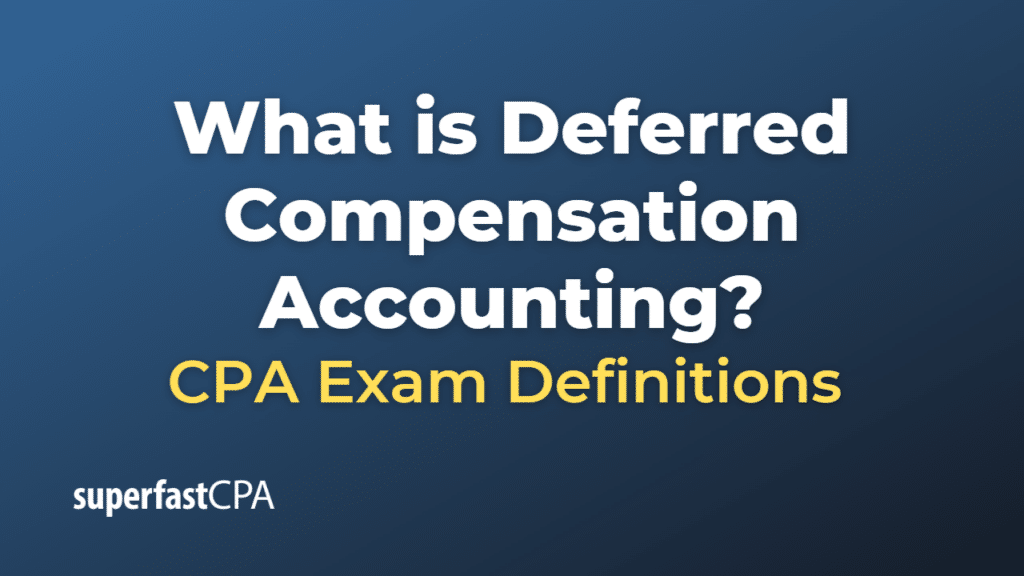Deferred Compensation Accounting
Deferred compensation is a portion of an employee’s income that is paid out at a date after which that income is earned. Common examples of deferred compensation include pensions, retirement plans, and employee stock options. Deferred compensation is typically used as a tax-saving strategy, as it may reduce the taxable income in the year it is earned, deferring the tax liability to future periods when the income is paid out.
In terms of accounting, deferred compensation is typically recognized as an expense by the company in the period in which the employee performs the service, and it is accrued as a liability on the balance sheet until it is paid out.
Let’s take a simplified example to illustrate the accounting for a deferred compensation plan. Suppose a company promises to pay a key executive an additional $500,000 at the end of a 5-year period if the executive stays with the company for the full term.
Each year, the company would recognize an expense of $100,000 ($500,000 / 5 years) on its income statement to reflect the cost of the executive’s services. Concurrently, it would increase a liability, such as “Deferred Compensation Liability,” on its balance sheet by $100,000. By the end of the 5-year period, the full $500,000 would have been recognized as an expense, and the liability would be $500,000.
When the deferred compensation is finally paid to the executive at the end of the 5-year period, the company would then reduce its cash (or whatever form the payment takes) and eliminate the deferred compensation liability on its balance sheet.
Remember, the specifics can vary depending on the exact type of deferred compensation and the relevant accounting standards (e.g., U.S. GAAP, IFRS), so professional advice should be sought when accounting for these types of transactions.
Example of Deferred Compensation Accounting
Let’s use an example of a company offering a deferred compensation plan for a key executive.
Suppose XYZ Corporation offers its CEO a deferred compensation plan. According to the plan, if the CEO stays with the company for the next 5 years, she will receive a bonus of $1 million at the end of that period.
XYZ Corporation would handle the accounting for this deferred compensation plan as follows:
Year 1: At the end of the first year, XYZ Corporation would make the following journal entries:
- Debit (Increase) Compensation Expense: $200,000 ($1,000,000 / 5 years)
- Credit (Increase) Deferred Compensation Liability: $200,000
This recognizes the cost of the CEO’s services for the year and records the company’s obligation to pay the deferred compensation in the future.
Year 2-5: XYZ Corporation would repeat these entries at the end of each of the next four years. By the end of the fifth year, the company would have recognized a total of $1 million in compensation expense, and the Deferred Compensation Liability on its balance sheet would also be $1 million.
Payment of Deferred Compensation: At the end of the fifth year, when the company pays the $1 million to the CEO, it would make the following journal entries:
- Debit (Decrease) Deferred Compensation Liability: $1,000,000
- Credit (Decrease) Cash: $1,000,000
This eliminates the liability and reduces the company’s cash balance by the amount of the payment.
This is a simplified example and actual deferred compensation plans can be much more complex and subject to specific tax and legal regulations. Always consult with a professional accountant or financial advisor when dealing with these types of issues.













